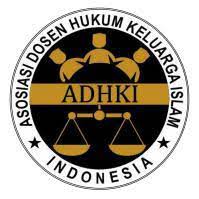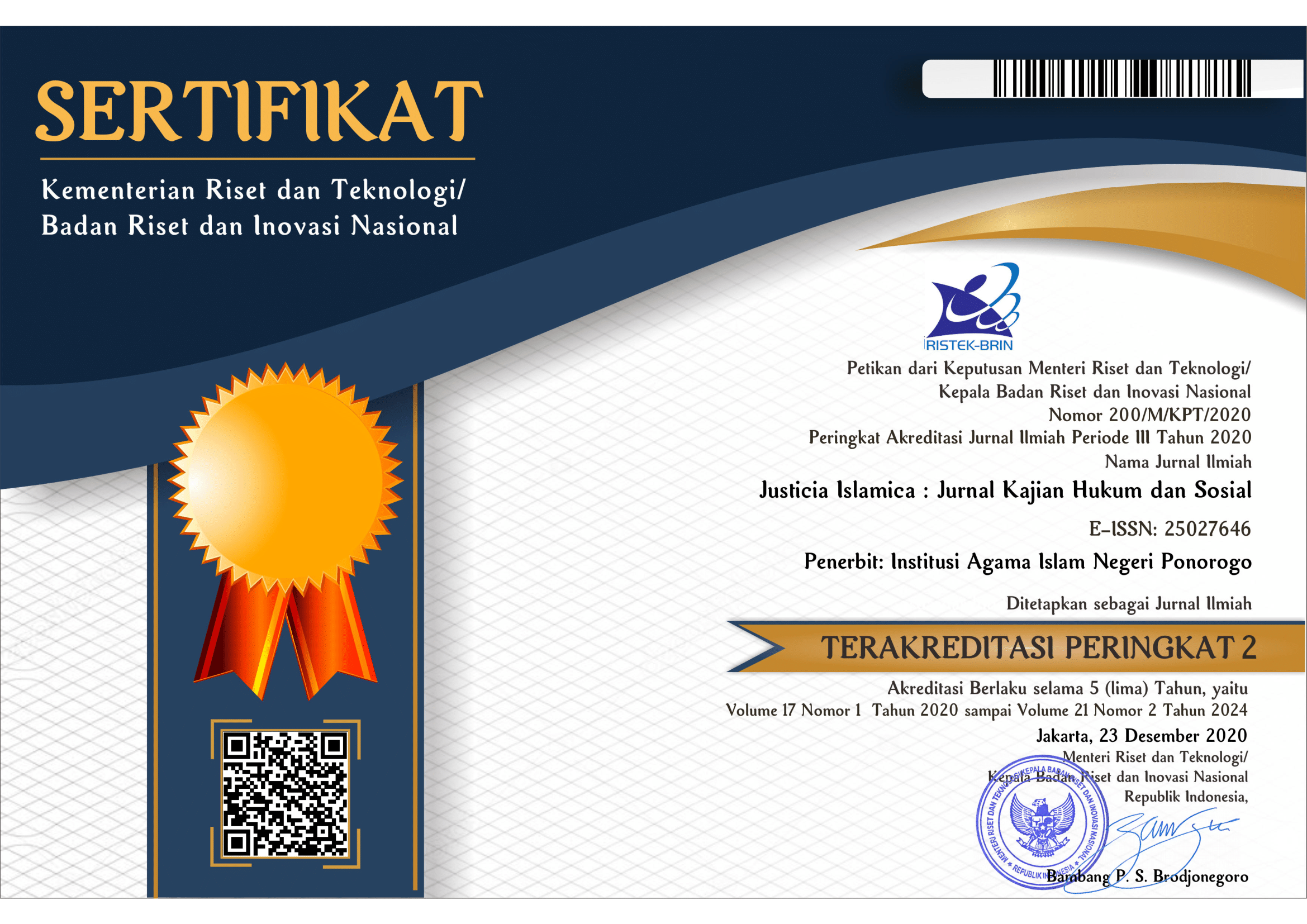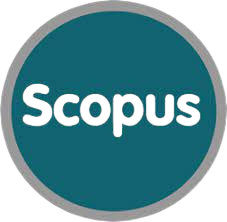Sharing the Heritage of the Simalungun Batak Community: Realities and Implications
DOI:
https://doi.org/10.21154/justicia.v19i2.3257Keywords:
law, inheritance, divisionAbstract
This study aims to determine the pattern of implementation of the distribution of inheritance by the Muslim community of the Simalungun Batak tribe in North Sumatra in terms of the reality and implications involved. The research model in this study is qualitative, while the approaches used are fiqh muamalah and family law approaches. Data were obtained from in-depth interviews and field observations by observing the application of inheritance law in the Muslim community of the Simalungun Batak Tribe then analyzing the pattern of distribution and utilization of inheritance. The results of this study indicate variations in the pattern of implementation of the distribution of inheritance carried out by the Muslim community of the Simalungun Batak Tribe in North Sumatra. Some people are reluctant to sell heritage assets and choose to keep them to preserve culture. Some choose the inheritance distribution based on faraid law, deliberation, fair distribution, or rely on the provisions given by their parents during their lifetime. The division through deliberation can be done if it is not intended to conflict with Islamic inheritance law. It is also possible to divide the share for each heir with an equal share if it follows the instructions of the Islamic Compilation Law and takharruj instructions.
References
Abu Bakar, Al-Yasa. Ahli Waris Sepertalian Darah. Jakarta: INIS, 1998.
al-Dimasyqi, Al-”˜Alamah bin ”˜Abdurrahman. Fiqih Empat Mazhab. Bandung: Harsyimi, 1980.
al-Zuhaily, Wahbah. Fiqh Islami wa Adillatuhu. Damaskus: Daru al-Fikr al-Mu’ashir, 2004.
_______________. Al-Muamalah Al-Maliyah Al-Mu’ashirah (Buhuts Wa Fatawa Wa Hulul). Damaskus: Daru Al-Fikr, 2002.
As-Sabuni, Muhammad Ali. Shaafwah al-Tafasir. Beirut: Dar al-Fikr, t.th.
Daradjat, Zakiah. Ilmu Fiqh. Yogyakarta: PT Dana Bhakti Wakaf, 1995.
Departemen Pendidikan dan Kebudayaan. Kamus Besar Bahasa Indonesia, (Jakarta: Penerbit Balai Pustaka, 1998.
Djamil, Fathurrahman. Filsafat Hukum Islam. Jakarta: Logos Wacana Ilmu. 2010.
Habiburrahman. Rekonstruksi Hukum Islam Di Indonesia. Jakarta: Kencana, 2011.
Hamdi, Kama. al-Mawarits Wal Hibah Wal Washiyah. Iskandariyah: Mansya’ al-Ma’arif, 1998.
Haidar, Ali. Duraru al-Hukkam (Syarh Majallah al-Ahkam). Riyadh: Daru Alim al-Kutub, 2003.
Islamy, M. Irfan. Prinsip-prinsip Perumusan Kebijakan Negara. Jakarta: Sinar Grafika, 2000.
Ismail, Muhammad Bakar. Al-Fiqh al-Wadhih, Terj. M. Zuhirsyan dkk. Selangor: Berlian Publications, 2008.
Martosedono. Hukum Waris, Semarang: Dahara Prize, 1998.
Lubis, Suhrawardi K. and Komis Simanjuntak. Hukum Waris Islam (Lengkap Dan Praktis. Jakarta: Sinar Grafika, 2007.
Munawwir, Ahmad Warson. Al-Munawwir Kamus Arab-Indonesia. Yogyakarta: Munawwir, 2010.
Ridha, Rasyid. Tafsir Alquran al-Ahkam (Tafsir al-Manar). Vol. 4 , t.th.
Shabuni, Muhammad Ali. Al-Mawarits fi al-Syari’ah Islamiyah fi Dhaui al-Kitab wa al-Sunnah. Kairo: Darul Hadis, t.th.
Syahrur, Muhammad. Al-Kitab Wa Al-Qur’an: Qira’ah Mua’á¹£irah. Damaskus: al-Ahali li al-Ṭaba’ah wa al-Naá¹£r wa al-Tawzi’, t.th.
Syarifuddin, Amir. Pelaksanaan Hukum Kewarisan Islam Dalam Lingkungan Adat Minangkabau, Jakarta: Gunung Agung, 1984.
Downloads
Published
Issue
Section
License
Requirements to be met by the author as follows:
- Author storing copyright and grant the journal right of first publication manuscripts simultaneously with licensed under the CC BY-SA allows others to share the work with a statement of the work's authorship and initial publication in this journal.
Authors can enter into the preparation of additional contractual separately for the non-exclusive distribution of a decadent version of the journal issue (e.g., post it to an institutional repository or publish it in a book), with the recognition of initial publication in this journal.
Authors are allowed and encouraged to post their work online (e.g., in institutional repositories or on their website) before and during the submission process because it can lead to productive exchanges and citations earlier and more severe than published works. (see The Effect of Open Access).
This work is licensed under CC BY-SA.


















